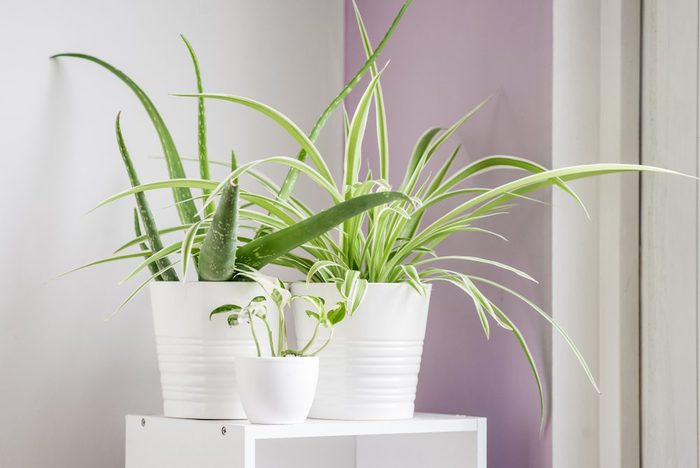
Natural purifiers in a pot
According to the EPA, our homes can have three to five times more pollutants than the outdoors. You could be living in a “sick” house and not realize it: Substances like xylene (in paint and lacquers), benzene (furniture wax, insect sprays) trichloroethylene (cleaners, adhesives), and formaldehyde (upholstery, air fresheners)—can produce symptoms like headaches, sore throats, or allergy-like breathing troubles. The NASA Clean Air Study was designed to find effective and simple ways to detox the air in the space station—and it reveals that common house plants have air purifying superpowers.
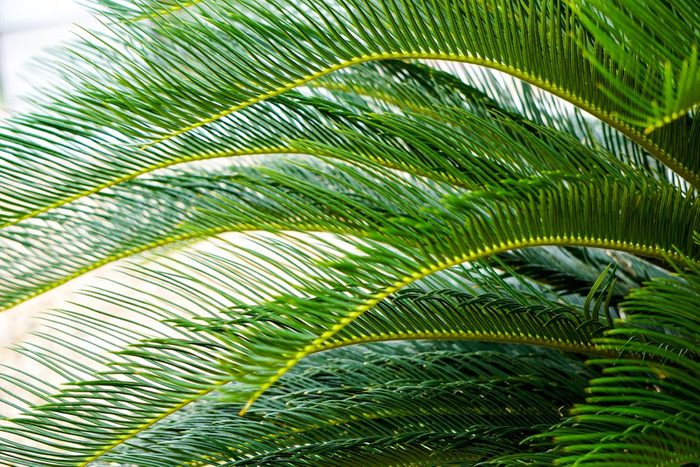
Dwarf Date Palm
It’s hardy and drought-resistant, but it’s a slow grower. Once this palm matures, it will live for decades and grow eight to ten feet tall with sharp needle-like spines arranged near the base of the leaf stem—take care around them, they can penetrate through skin and clothing. However, the dwarf date palm is noted for its ability to filter out xylene. For optimal air-filtering, NASA recommends placing at least one plant per 100 square feet of a home or office space.
Make sure you know these 14 ways toxins are sneaking into your home.
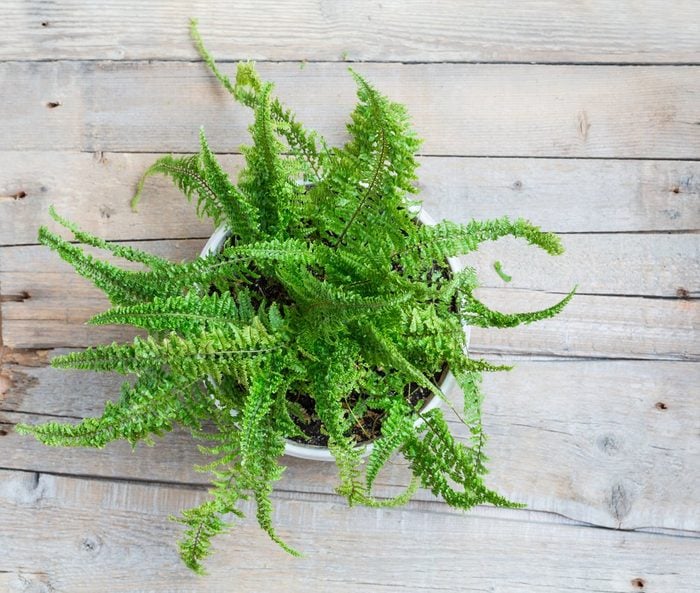
Boston Fern
Boston ferns are native to tropical forests and swamp areas so they will thrive in low light and high humidity—they’re ideal for your bathroom. The moisture from your shower will hydrate the plant, requiring little extra care from you. Besides being a pretty and decorative addition to your bathroom, the Boston fern helps remove xylene and—the NASA study revealed—it was the top house plant for removing formaldehyde. Don’t miss these sneaky causes of indoor air pollution.
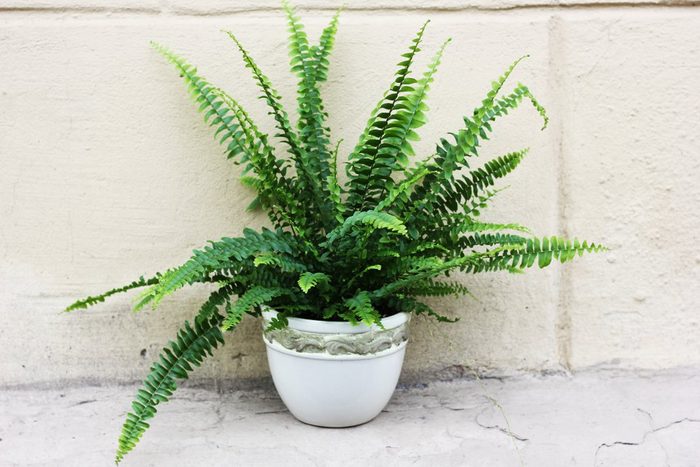
Kimberly Queen Fern
Another fern makes the NASA list: Unlike the Boston fern, which spreads out towards the side, the Kimberly Queen grows upright, giving it a tidy appearance. This Australian native can take more heat and sun than its Boston cousin, but you do have to water it on a regular basis. Since it can grow indoors or out, this fern makes an attractive addition placed under an overhang on a patio or deck, especially if it’s an area in close quarters to a garage or as xylene agents are in vehicle exhaust. And, air pollution is particularly bad if you live in one of these Canadian cities.
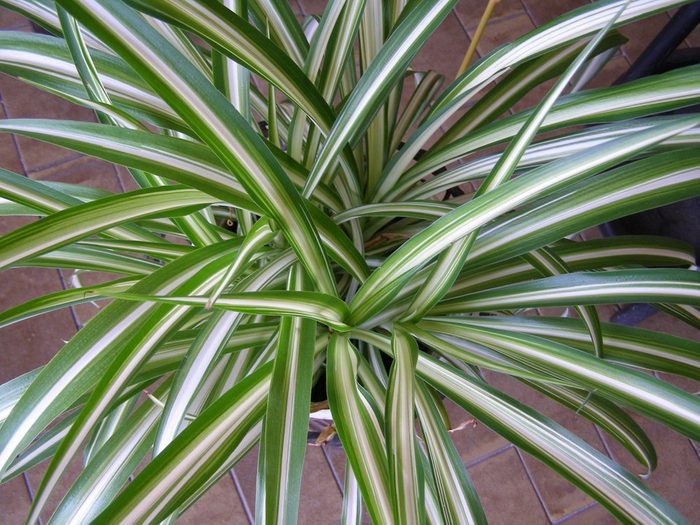
Spider Plant
Talk about a plant that keeps giving. It removes impurities from the air like formaldehyde and carbon monoxide. NASA’s study found that spider plants removed 95 percent of formaldehyde from a sealed plexiglass chamber in 24 hours. Even better, the main plant sends out shoots, called “spiderettes” that flower and eventually grow into baby spider plants that you can transplant. That also helps: Research indicates that people are more relaxed and happy after caring for plants—say, for example, when they’re re-potting them.
It’s shocking how much Canadians waste each year. Here’s how to help.
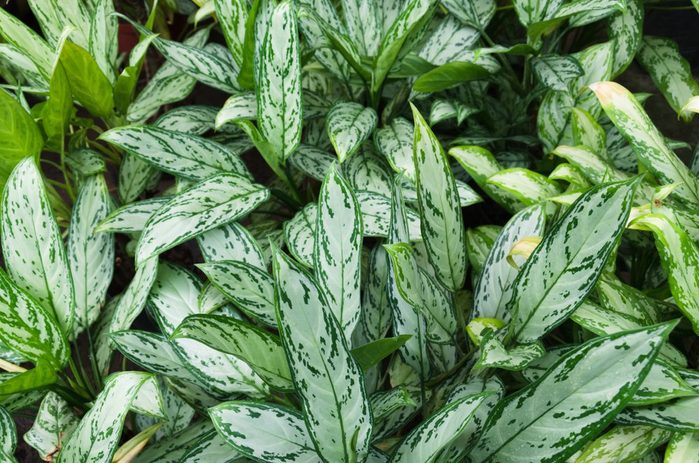
Chinese Evergreen
A sturdy plant that’s easy to keep alive, this one is ideal for your desk or on a living room side table. Its lance-shaped leaves are interspersed with pretty shades of gray, green, and silver. It thrives in low to medium light and is slow-growing—it lives to a ripe old age of ten years. The evergreen plant filters formaldehyde and benzene. Just take care if you have pets or young ones: It’s toxic when ingested. Always consult the ASPCA list of poisonous plants for cats and dogs before buying a plant, including the ones included in the NASA list.
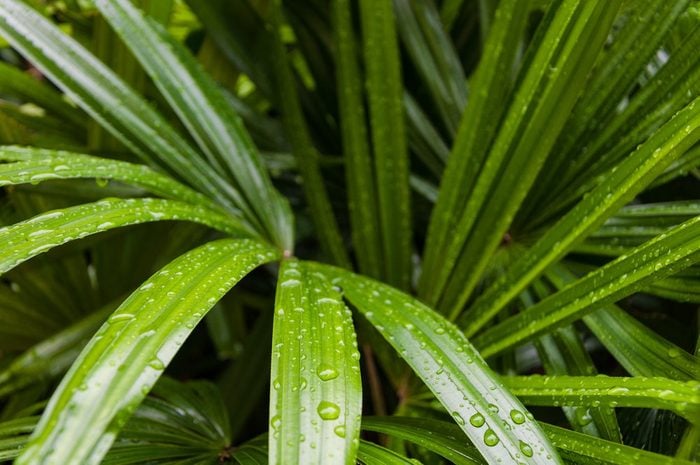
Bamboo Palm
This plant boasts elegance and height in addition to removing harmful elements like benzene and formaldehyde. Bamboo palms also help keep indoor air moist, making it a welcome addition in dry winter months. This palm takes a bit more care: It loves bright, but not direct sunlight and needs monthly fertilizing and regular misting; when it outgrows its container (every two to three years), you’ll need to re-pot it.
Suffering from allergies? Here’s what doctors do to allergy-proof their homes.
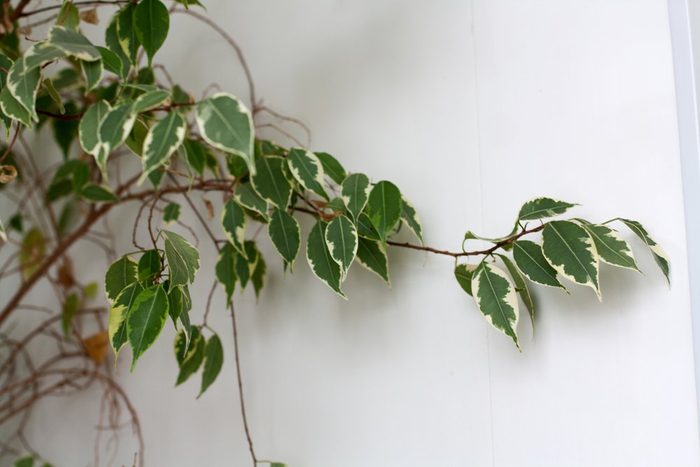
Weeping Fig
According to NASA’s Clean Air Study, the weeping fig is very efficient at cleansing airborne formaldehyde, xylene, and toluene. Xylene and toluene tend to build up from carpet and furniture cleaners and stain removers. This one is easy to care for, so you can place a couple in each room. Just keep them out of direct sunlight and they’ll be a companion for decades.
Here are 5 ways we can save the environment, according to David Suzuki.
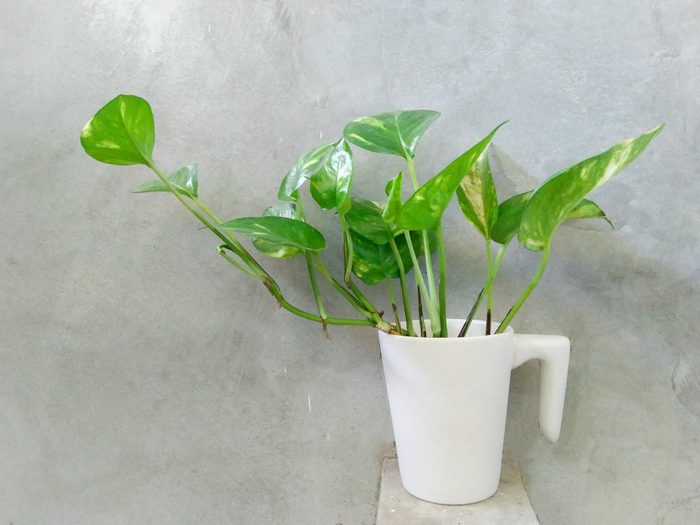
Devil’s Ivy
Devil’s Ivy is actually quite angelic. It’s considered one of the most effective indoor air purifiers from benzene, formaldehyde, and xylene. Plus, if you’re new to growing house plants, this is a great first plant to get. It’s lush, hardy, and inexpensive. Another nice feature is that it can grow up to eight feet long and in a variety of directions. In a hanging basket, it will trail downwards. Place it a pot and train it to climb a totem or trellis or place in a pot on a mantle or coffee table and let it grow horizontally.
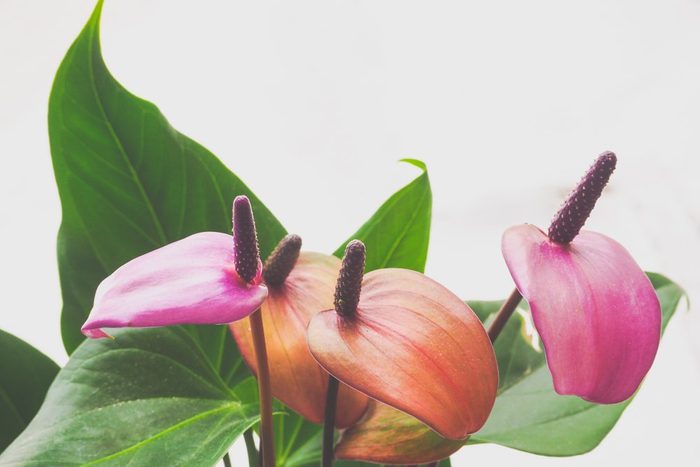
Flamingo Lily
A beautiful pop of color and an air filter to boot, this showy evergreen plant is known for its shiny, heart-shaped, red flowers. According to NASA, it removes airborne formaldehyde, ammonia, toluene, and xylene. Take note—this one is toxic, so avoid it if you have pets or kids.
Sex, water, exercise – here’s what to do when your allergies aren’t seasonal.
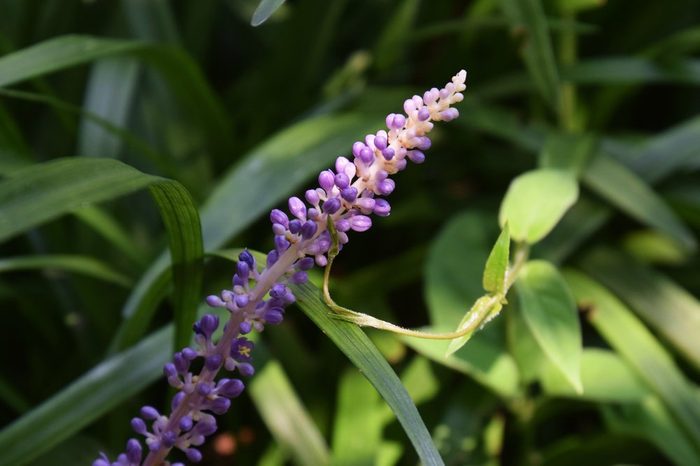
Lilyturf
This popular ground cover has grassy leaves that are spiked, and it produces blue or white flowers. Although it is usually grown outdoors, it does very well as a window sill plant and since it helps remove trichloroethylene (in printer ink and dry cleaning chemicals), xylene (permanent markers, coloring pens, print cartridges) and ammonia (common aerosols), you may want to line your office or home office windows with pots of lilyturf.
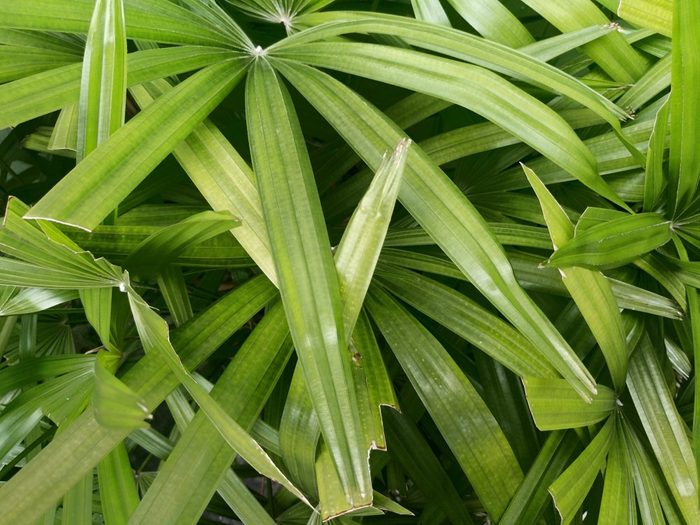
Broadleaf Lady Palm
You’ve probably seen this in shopping malls, offices, and hotel lobbies because they tolerate low levels of light. With a maximum height of around six feet, they are perfect as a stately and dramatic feature for the low sunlight corners of your home. They do need regular waterings and moist soil, but you’ll benefit from the plant’s ability to cleanse the air of formaldehyde, ammonia, xylene, and toluene.
Learn more about the healing benefits of plants with our guide.
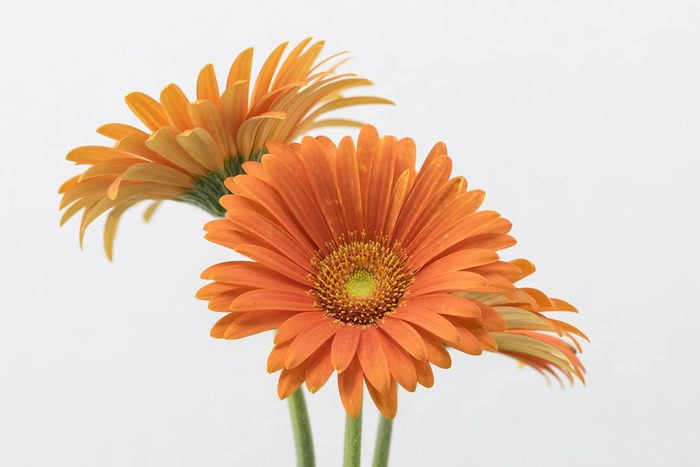
Barberton Daisy
These colorful and cheerful daisies were mainly outdoor plants until florists started using them in arrangements. Grown indoors, they can produce flowers at any time of the year, in white, red, orange, pink and purple. The flowers usually last around four to six weeks, but even without the flowers, the Barberton daisy has lush, dark green leaves that are effective at filtering out formaldehyde, benzene, and trichloroethylene. They are most happy with full sun and plenty of water and well-drained soil.
Is candle smoke bad for you? Learn why candles might be as toxic as cigarettes.
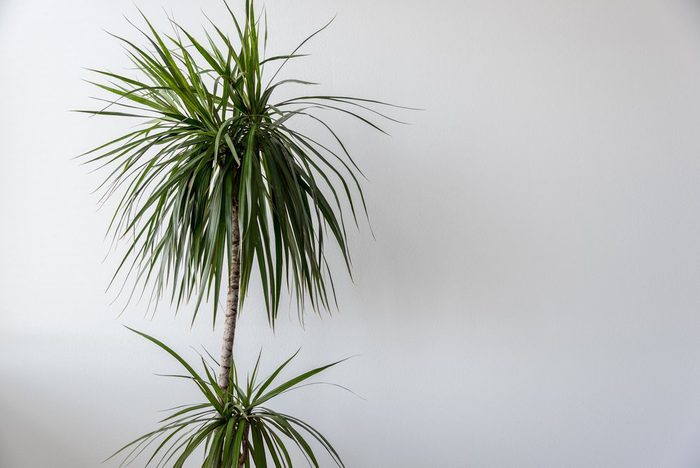
Cornstalk Dracaena
You’ll be tempted to look for an ear of corn within the leaves of this plant because it really looks like a corn stalk in a pot. It doesn’t yield sweet corn but it does help rid your home of toxic agents like formaldehyde, trichloroethylene, and benzene. The plant doesn’t require too much—it can handle low light and the occasional missed watering.
Curious about cannabis? Here’s what you need to know about CBD.
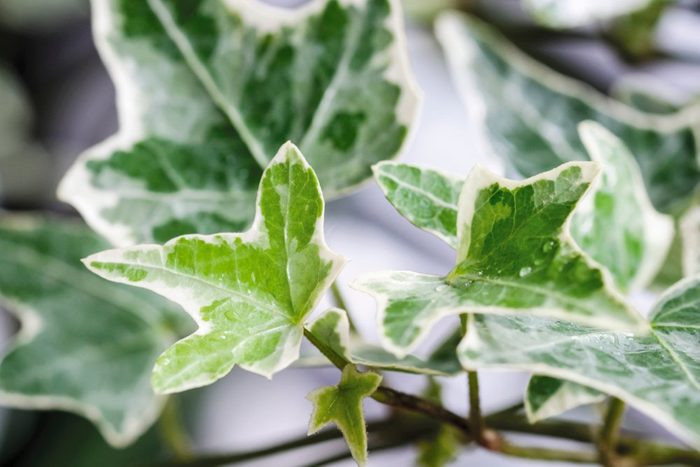
English Ivy
If you work in a salon or do at-home salon treatments with keratin, hair coloring, perms, hair-straightening, nail polish, or nail polish hardeners, consider placing some English ivy in the room. It filters out four toxic agents—trichloroethylene, formaldehyde, benzene, and xylene, which are found in these salon products. A hardy plant that can tolerate low light in intermittent watering, it looks lovely in a hanging basket with vines trailing over the side.
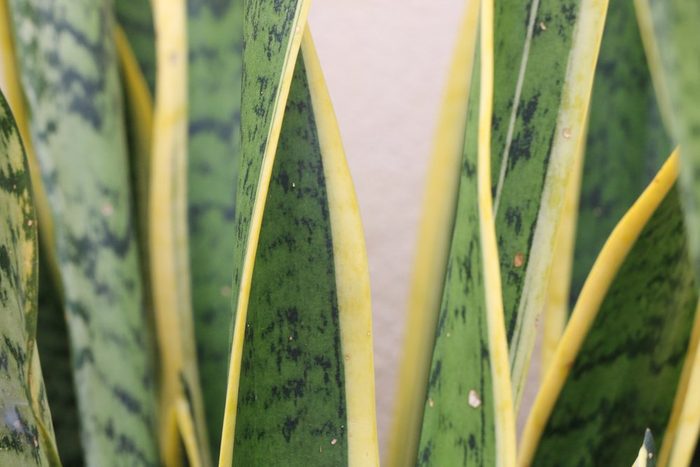
Variegated Snake Plant
Because this plant needs humidity, it’s perfect for your bathroom—the right place for it to filter out the formaldehyde in cleaning products, facial tissues, toilet paper, and hair treatments and dyes. If you remember to mist it, the snake plant is also a nice addition to your bedroom because it gives off oxygen at night—a sleeping aid. If you’re not confident about your green thumb, check out the best way to grow plants indoors.
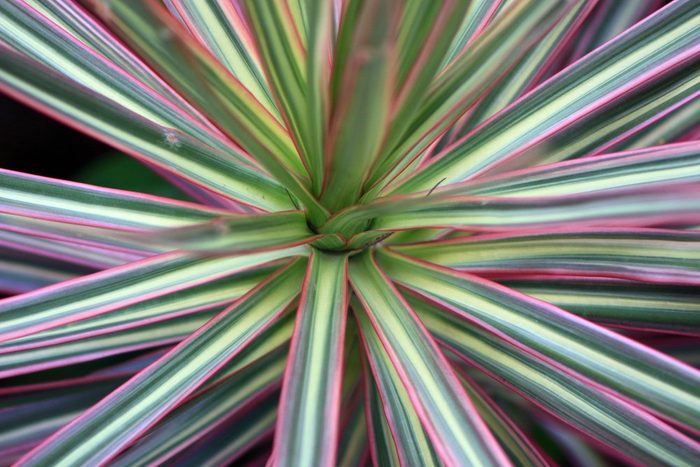
Red-Edged Dracaena
For people planning home improvements, start by investing in some red-edged dracaena plants. It is rated as one of the best plants for removing trichloroethylene, found in some home improvement materials such as paint removers and strippers, adhesives, varnish remover, and aerosol degreasers. Conveniently, these plants are sold at home improvement stores. They’re easy to grow and maintain and will reach about ten feet tall with a spread of three feet; they live for decades under the right care.
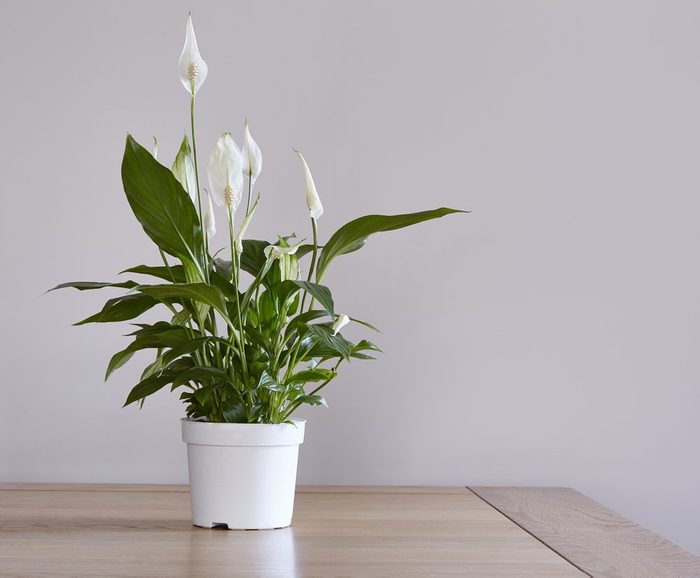
Peace Lily
The hidden talent behind the lush and beautiful peace lily is its excellent air filtering system. It boasts a high transpiration rate—that means they carry a lot of water from the roots to the leaves and releases moisture back into the room. Another benefit: Peace lilies soak up mold spores. If you want to encourage pretty flowers, keep it a spot that gets morning—but not afternoon—light and make sure to mist the leaves and keep the soil damp.
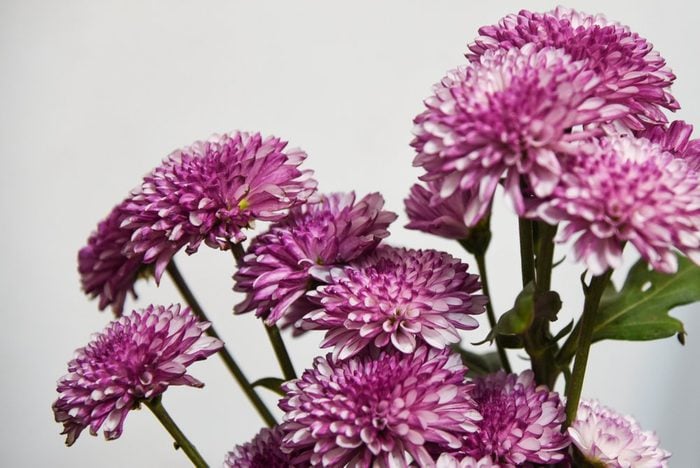
Florist’s Chrysanthemum
While technically not a houseplant, these bright, colorful blossoms are usually abundant in stores in the fall and adorn porch steps with their seasonal sidekick pumpkins. But you may want to bring some indoors: They knock down levels of all the harmful pollutants NASA studied. Decorate for fall and place mums anywhere in your home where they can get not-too-warm bright sunlight. Water them often and deadhead the flowers to keep the plant looking healthy, and you’ll be able to enjoy blooms for six to eight weeks.
Next, find out 10 things doctors secretly wish they could tell you.
